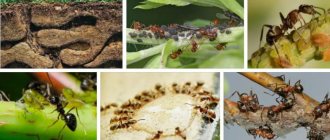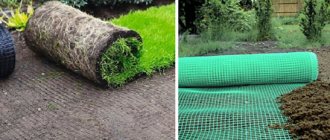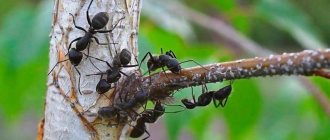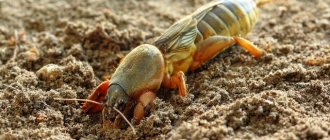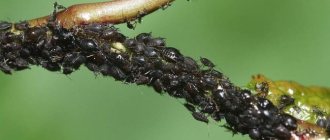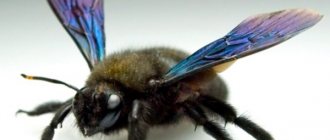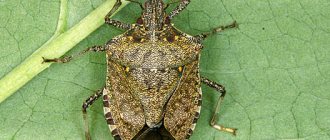The summer season is a time of intense work for gardeners and gardeners: preparing the soil, planting seedlings, planting vegetables and caring for shrubs and fruit trees. In the “battle” for the harvest, moles can cause a lot of trouble - underground inhabitants who, in search of food, dig multi-story galleries and tunnels, gnawing the roots of useful plants on their way. Often the only way to combat pests is poison for moles, which will help reduce their numbers on the site and save garden crops from death.
Benefits and harms of moles
Some scientists believe that deep passages and mole holes improve soil permeability and benefit the soil. However, moving underground along dug passages, these animals contribute to the death of garden plants and even trees due to damage to the roots. When many molehills appear in the middle of the beds with already planted vegetables, the owners become desperate because of the ruin of their work and the future harvest.
If no humane methods of repelling or protecting against underground pests can help, then many people think about how to destroy or how to poison these animals, reducing their number in the garden or dacha.
Specialized repellers
Manufacturers of goods for gardeners produce special repellent devices. The principle of their operation is to emit ultrasound or sound waves. Many run on solar panels and do not require a connection to the grid.
You can buy a repeller (Antikrot, Ecotec, Help, etc.) in online stores or retail outlets for gardeners. They are distinguished by ease of installation (you need to stick the device's pin into the soil) and low maintenance. But this method has a drawback: animals quickly get used to the effects of sound and stop perceiving it as a sign of danger.
Fighting moles
Over the past 10 years, experienced gardeners have come up with many ways and means to combat underground pests, which can be divided into 3 groups:
- repelling moles using plants, traps, homemade devices and ultrasonic repellers;
- chemicals that allow you to destroy animals using poison;
- folk methods with which you can catch or poison pests.
What may shrews be afraid of?
Since moles have practically no developed vision, they receive all information through hearing and smell. However, they cannot tolerate strong odors and sounds, for example, the “aroma” of rotting fish, the smell of valerian, white spirit and other chemicals. Shrews also don’t particularly dislike vibration and loud noises.
Store-bought poisons against digging animals
There are several types of mole poisons available for sale in hardware stores or on the market, which have varying effectiveness and effects on pests.
There are several types of such rodenticides on sale:
- poisonous baits that are placed near the burrows: braces, pellets, granules;
- concentrated liquids used to prepare poison as an additive to a base of grains or other products;
- products that emit poisonous gas.
Pesticides for moles
The most popular poisons for moles:
- ARGUS Garden (Argus Garden, Russia) – rodenticidal poison in the form of granules, weight 50 g. Helps get rid of moles using the toxic substance bromadiolone, which causes suffocation in animals, which causes their death. Granules should be placed 15-20 g in the form of bait on both sides near the mole exit. Price 50 rub.
- ARGUS-gel - specially created for the destruction of moles, rats and mice; the tube contains 30 g of gel. Consumption rate: apply gel in portions of 5-10 g into each hole. The active ingredient brodifacoum affects the animal's respiratory system, causing paralysis. Price 100 rub.
- Gel concentrate Green House (Rosagroservice) - a special liquid for preparing poison against rats, moles and mice, volume 1 liter. Contains bromadiolone, which causes suffocation in animals after eating poisoned bait, which is made at the rate of 50 g of poison per 1 kg of edible base. Liquid consumption is 15-20 g for each molehill. Price 700 rub.
- Anti-Mole - rodenticidal granules (50 or 100 g) containing a toxic substance, placed in a volume of 15-20 g in each underground passage of moles and mole rats. Price 50-100 rub.
- Russian trap - special paraffin briquettes for exterminating moles and rodents. The package contains 1 kg of blocks, approved for use in residential premises, cellars and garden areas. The active substance is brodifacoum, which causes paralysis of the respiratory organs of animals. Price 600 rub.
- Anti-Mole Modifi is a poison in the form of pellets for fighting moles and mole rats in a 120 g package. The main components are garlic, bromadialon, bitrex, kerosene, grain base, etc. Pellets of 10-20 g are placed near both ends of the holes. Price 100 rub.
Important!
Before purchasing any poison, be sure to read the attached instructions, since many poisonous substances have a negative effect not only on animals, but also on surrounding plants and even affect the soil. Therefore, their use in the garden or garden may have a negative impact on the future harvest.
Destroy all individuals on the site
If there is only one mole or there are few of them, the pests can be destroyed mechanically:
- track when new molehills appear;
- prepare a shovel and wait until the mole begins to make its way to the surface, forming a mound;
- quickly drive the shovel to the maximum depth next to the molehill and dig out the animal.
A hunted mole is defenseless. It can be taken away from the site into the forest or killed.
You can fight moles by placing special mole traps and traps on the site. The structures are purchased, they need to be dug into the ground or installed in places where the pest constantly appears, as specified by the manufacturer.
If there are a lot of moles, then such methods will be ineffective. There are special teams that carry out gassing of tunnels with toxic substances. You cannot try to do this on your own using pepper spray or household gas, and it can be dangerous for the owner himself. The use of poisoned baits is not used: moles do not feed on grain or sweets and are sensitive to foreign odors.
The use of mole breakers - special electrical devices that are installed in existing tunnels - is also effective. While moving, the mole will be killed by a strong electric shock. The disadvantage of this method is the high cost of the devices, but this way you can destroy pests as they appear over many years.
Gas poisoning of moles
Poisoning moles with gas
One of the modern means of getting rid of underground pests is the use of poison from moles in the country in the form of poisoning them with gas, which is released when fumigating underground passages with an insecticide.
Dakfosal Antikrot is a poisonous agent against moles and insects, sold in a tube with tablets of 3 pcs. Contains aluminum phosphide, which during the process of fumigation or fumigation releases a poisonous gas that penetrates into the burrows of underground pests and destroys them. Used at air temperatures not lower than +10ºС.
The active substance formed during spraying, phosphine gas, is a fumigant insecticide, which enters the respiratory system of pests and blocks the access of oxygen there, which quickly and effectively leads to their death. The higher the air temperature, the higher the toxicity of the substance.
You can also place the tablets themselves directly in the underground passages of the moles, and then cover them with improvised material (boards or stones) and cover them with soil on top. The consumption of the product is 3 tablets for each hole.
Important!
The fumigation process is best carried out by specialists in a group of several people. When working with such toxic gaseous substances, it is imperative to wear a respirator, protective suit and gloves. The contents of the glass flask must be used in one go, because when air gets into it, an irreversible chemical reaction occurs.
This product is highly toxic to the environment, so it is not recommended for use in the garden due to its negative effect on the soil and plants.
Features of underground animals
Before getting rid of these animals, it is necessary to study their lifestyle and habits. A mole is an animal from the class of mammals that eats insects. Their body length can reach from 5 to 20 cm. Moles lead an underground burrowing lifestyle (except for shrews), their elongated body is covered with velvety fur. Its peculiarity is that the villi grow straight, not oriented in one direction or another. Thanks to this, moles can move underground in different directions without problems. The coat color is dark gray or black. The tarsi are short and have a spade-shaped extension. The forelimbs are much stronger than the hind limbs, since all the work of digging tunnels falls on them. Moles have poor eyesight, but this is compensated by a heightened sense of touch and smell.
The animal's lair consists of a lower circular passage, an upper (more narrowed) and a lair, which is lined with soft substances. About 10 more tunnels are connected to the outer passage, of which about 6 are directed to the upper passage, and from the last 3 lead to the lair. It is in the lair that the female gives birth to 3-5, occasionally 6 cubs. This happens from April to June. It happens that moles are born again in August. Pregnancy lasts 6 weeks.
Moles eat mainly food of animal origin. These are insect larvae, worms, wood lice, frogs, lizards, even snakes. They find food thanks to their good sense of smell and hearing. The mole has poor eyesight, but uses it, for example, when swimming across a pond. The animal does not go into hibernation; it only digs tunnels deeper underground.
Traditional methods
Do-it-yourself mole poison
You can prepare poisonous baits to destroy underground pests yourself. Do-it-yourself mole poison is prepared from wheat grains, which must first be boiled. Then add any pesticide or other toxic substance to the resulting porridge and mix well.
The prepared poison in the form of balls is laid out throughout the site, buried to a depth of at least 15 cm. The effectiveness of the poison will increase if it is placed directly inside the passages after excavating a molehill.
This folk method is cheaper and can replace store-bought poisonous agents. To increase reliability, after 2 weeks the procedure with poisoned baits should be repeated.
On a note!
Some motorists are doing something similar to the fumigation method and have come up with the idea of poisoning moles with exhaust gas through a hose laid to the hole. This method is not effective, since the soil in underground communications often collapses, and gas does not penetrate deeper. Its disadvantage is also the harm that is caused to microorganisms in the soil and planted plants.
Another folk method is quite labor-intensive: you need to collect earthworms, which are the main food for moles. Treat each one with rat poison by cutting it with a knife and sticking it inside, and then put it in the underground passages as poison.
Interesting!
In North America, stores sell poisonous baits in the form of worms, which makes it easier to prepare “poisonous worms” at home. It is enough to extract the ready-made worm-like poisons and place them in the mole tunnels.
If you liked the article, please share it
Previously on the topic:
Share
